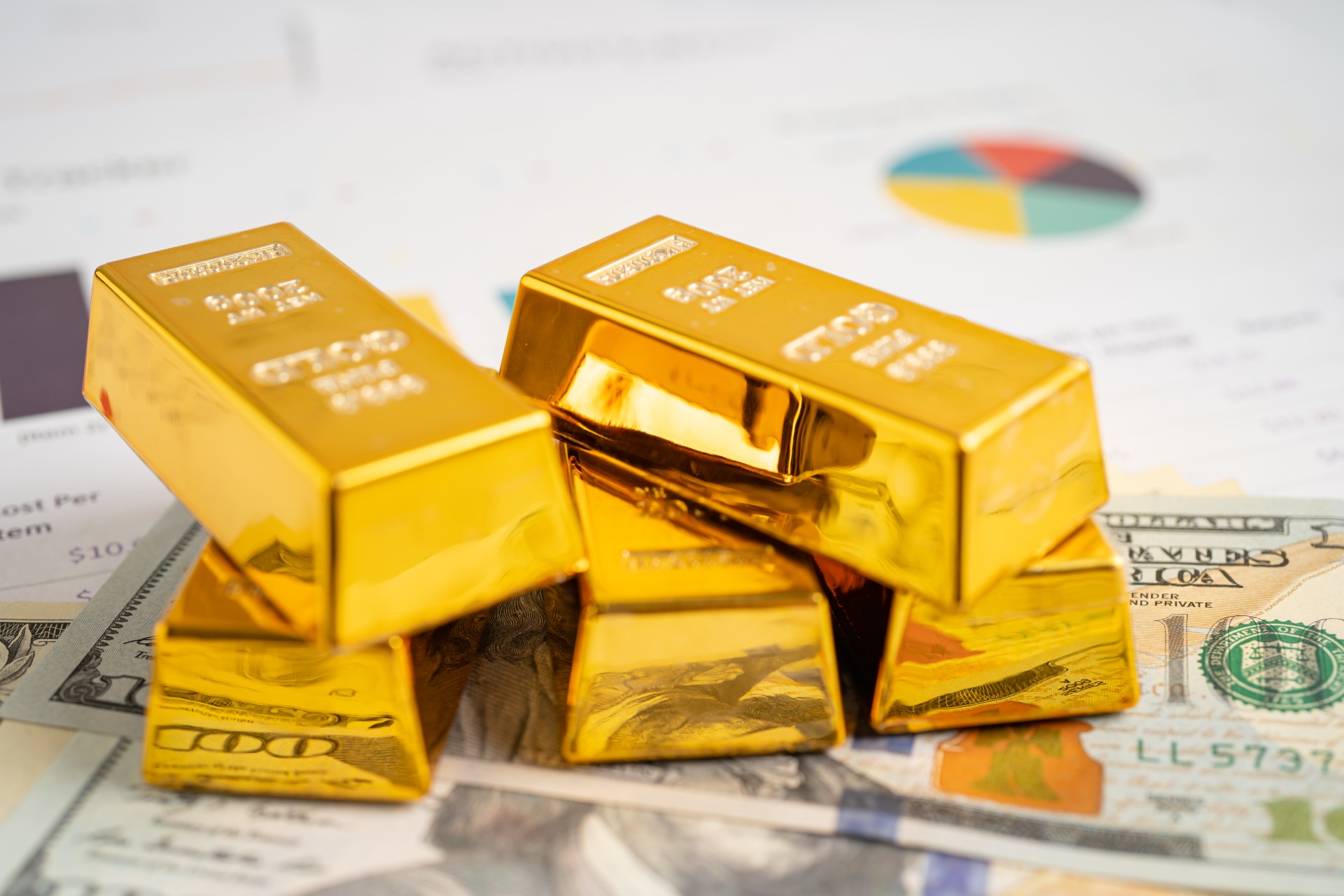Gold prices surged to session highs after the U.S. labor market showed signs of cooling. On Friday, the Bureau of Labor Statistics reported that U.S. non-farm payrolls increased by 142,000 jobs in August.
This number was lower than the expected increase of 164,000 jobs. Even though the labor market is slowing, the decline is happening in an orderly manner.
The unemployment rate also fell to 4.2%. This was in line with expectations and a drop from July’s unexpected rise to 4.3%.
Positive Response from Gold Market
In reaction to this weaker employment data, the gold market experienced solid gains. December gold futures last traded at $2,558.60 per ounce, marking a rise of 0.61% for the day.
 Despite the disappointing job growth, there was some good news for American workers. The report showed wages increased by 0.4%, which is an improvement from July’s 0.2% rise. Wage growth exceeded expectations, as economists had predicted a 0.3% increase. Over the past year, average hourly earnings have risen by 3.8%.
Despite the disappointing job growth, there was some good news for American workers. The report showed wages increased by 0.4%, which is an improvement from July’s 0.2% rise. Wage growth exceeded expectations, as economists had predicted a 0.3% increase. Over the past year, average hourly earnings have risen by 3.8%.
Revisions to Previous Employment Data
In addition to the disappointing job numbers for August, the report included downward revisions to the employment figures for June and July. July’s employment numbers were revised down to 89,000, a decrease from the initial estimate of 114,000. June’s numbers were also revised down from 179,000 to 118,000. This means that combined, employment in June and July is 86,000 lower than previously reported.
Market Reactions and Fed Expectations
Markets are interpreting the latest employment data as dovish, which is supporting gold prices. There are growing expectations that the Federal Reserve will cut interest rates aggressively later this month, in response to the August nonfarm payroll numbers. According to the CME FedWatch Tool, markets are pricing in a 49% chance of a rate cut on September 18.
Technical Analysis: Gold Could Reach New Heights
From a technical perspective, gold prices could rise to a new all-time high if they decisively break through the $2,524-$2,525 resistance level. Current indicators on the daily chart are positive and not yet in the overbought zone. This suggests that the path of least resistance for gold prices is upward.
 If buying continues beyond the previous peak around $2,531-$2,532, this will strengthen the positive outlook for gold. Traders often look for momentum indicators to confirm bullish trends. The Relative Strength Index (RSI) and moving averages can provide valuable insights into potential price movements.
If buying continues beyond the previous peak around $2,531-$2,532, this will strengthen the positive outlook for gold. Traders often look for momentum indicators to confirm bullish trends. The Relative Strength Index (RSI) and moving averages can provide valuable insights into potential price movements.
However, some chartists have expressed concern that the commodity is forming a triple top on the chart. A triple top occurs when the price struggles to break through a resistance level three times, indicating a potential reversal. If gold fails to breach the all-time high, it could fall into a very bearish trend. Therefore, caution must be observed.
Potential Risks for Gold Prices
On the downside, the psychological $2,500 mark now offers immediate support. If prices drop below this level, gold could slide back to the $2,471-$2,470 support zone. A convincing break below this could lead to further losses towards the 50-day Simple Moving Average (SMA), which is currently near the $2,440 level. If that level is breached, prices may head toward the $2,400 mark and the 100-day SMA, located around $2,388.
Investors should also keep an eye on global events that could impact gold prices. For example, any developments in international trade disputes or geopolitical conflicts can lead to sudden price swings. These events may cause investors to flock to gold as a safe haven, driving prices higher.
Global Economic Factors Impacting Gold
In addition to US economic indicators, global economic conditions play a significant role in gold pricing. Central banks around the world continue to accumulate gold as a reserve asset. This trend signals confidence in gold as a stable investment, especially during times of economic uncertainty. For instance, central banks have made record purchases in recent months, adding to gold’s appeal.

Moreover, the ongoing decarbonization efforts and push for renewable energy sources are changing commodity dynamics. As demand for green metals increases, traditional commodities like gold may also benefit from these shifts in investment strategies.
Gold prices surged to session highs after Job Data – Analysts Weigh In
Despite the optimistic market reaction, some analysts are not convinced. Michael Brown, a Senior Research Strategist at Pepperstone, called the employment report a mixed bag. He believes this complicates the Federal Reserve’s decision on monetary policy.
“Doves will point to the cooling pace of headline payroll growth as justification for a larger 50 basis point cut,” Brown said. “Meanwhile, hawks could argue that the lack of further cooling compared to July, along with strong earnings growth, justifies a more modest 25 basis point cut.” He added, “My base case remains the latter, particularly given the risk of sparking market panic with a larger cut.”
Gold prices surged to session highs after Job Data – Concluding Remarks
In summary, gold prices are rising as the U.S. job market shows signs of slowing. While the employment report has led to higher gold prices, uncertainty remains about the Federal Reserve’s next moves. Investors are watching closely as the situation unfolds.
Source: KITCO, FX Street
Data: Tomorrow Events
Charts by Trading View


